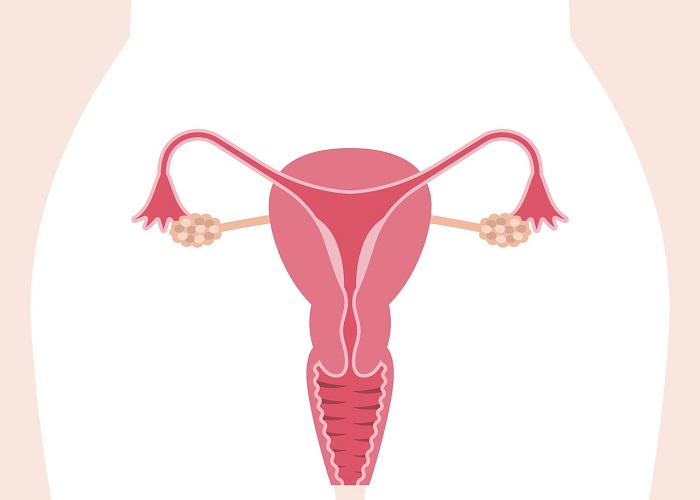Ovarian cysts can be defined as fluid-filled sacs that develop on the surface or inside both ovaries. Many women have ovarian cysts at some point in their lives, but they are more common in women of reproductive age, from puberty to menopause. Although most of them are benign, it is advisable to undergo the appropriate gynecological examinations to detect them and rule out that they may be or lead to malignant tumors, something essential to prevent ovarian cancer.
In this FastlyHealarticle, we show you everything you need to know about it and explain the symptoms, causes, and treatment of ovarian cysts.
Table of Contents
Causes of ovarian cysts
Ovarian cysts develop within or near the ovaries. Although several types can be distinguished, the so-called functional cysts are the most common and constitute a normal process during the menstrual cycle. To understand its formation, you should know that each month a follicle (where the ovum develops) grows in the ovaries, which produces the hormones estrogen and progesterone and releases the ovum when the ovulation process occurs. However, sometimes this follicle does not open and continues to grow, which leads to the formation of what is known as a functional cyst. From this, in turn, two types of ovarian cysts can be differentiated:
- Follicular cyst: they occur when the follicle does not open and does not release the mature egg, which causes that follicle to continue growing and develop a cyst filled with a kind of transparent liquid. These cysts do not usually cause pain and, in general, disappear spontaneously in 1 to 3 months.
- Corpus luteum cyst: on some occasions, the opening through which the ovum has been released can close, and the fluid accumulates within the follicle. Although this type of cyst usually disappears in a few weeks spontaneously, it may be the case that the cyst grows to reach about 4 cm in diameter, which carries the risk of causing bleeding or torsion in the ovary, producing severe pelvic pain or ABS.
Functional cysts should not be confused with other cysts caused by certain conditions or diseases, such as polycystic ovarian syndrome, endometriosis, or ovarian cancer (malignant ovarian cysts).
Symptoms of ovarian cysts
It is important to note that most ovarian cysts are small and cause no symptoms. They are more likely to cause discomfort or pain when the cyst increases in size and becomes significant if it ruptures, bleeds, causes twisting of the fallopian tubes or is hit during sexual intercourse.
If they do occur, the symptoms of ovarian cysts can include those detailed below:
- Constant abdominal pain, which can extend to the back or legs.
- Bloating or bloating.
- Pelvic pain during the days of menstruation and the days before it.
- Irregularities in menstruation.
- Pain during sexual intercourse is medically known as dyspareunia.
- Nausea or vomiting
- Tender breasts.
- Abnormal vaginal bleeding
- Pressure in the rectum or bladder, and even the need to urinate frequently.
When the pain experienced is sudden, very intense, and colicky, it could indicate complications.

When to go to the doctor, and how are ovarian cysts detected.
Remaining attentive to any unusual symptoms or changes is essential. You should consult your doctor in case of experiencing abdominal swelling or intense or spasmodic pain in the lower abdomen. Likewise, symptoms such as sweating, chills, increased respiratory rate, dizziness, weakness, loss of weight for no apparent reason, and abnormal vaginal bleeding are a cause of urgency.
Although most ovarian cysts are benign, it is essential to perform regular gynecological examinations to detect if there are cysts that do not currently produce symptoms, but that may carry a risk of malignancy.
Medical diagnostic
Cysts in the ovaries can be detected by a pelvic examination palpating the ovaries. If the specialist believes that there may be a cyst, the physical examination can be complemented with different tests such as:
- Transvaginal pelvic ultrasound
- Pregnancy test to rule out that the woman is pregnant.
- Blood test.
- Hormone levels test.
- Magnetic resonance.
Ovarian cyst: treatment
The treatment of ovarian cysts will depend in each particular case on the patient’s age and the size and characteristics of the cyst, and the symptoms it causes.
It is unnecessary to initiate specific treatment for functional cysts since these tend to disappear spontaneously after about 8 or 12 weeks. However, if cysts are frequent, the specialist may prescribe the taking of contraceptive pills to reduce the chances of new ones appearing.
In other cases, surgical intervention may be necessary, usually resorted to when the cysts do not disappear and cause symptoms if they are larger than 10 cm or occur in women close to menopause or who have already passed this stage. The surgical procedures that can be used in these cases are the following:
- Laparoscopy: A small incision is made just above or below the belly button to look inside the pelvic area and remove the cyst. This procedure is recommended for smaller cysts that appear to be benign.
- Laparotomy: a more significant cut is made in the abdomen to remove the cyst, which will later be analyzed to see if it is cancerous or not. In the case of a malignant ovarian cyst, further medical tests and consultation with an oncology gynecologist should be done to determine if the ovary and other nearby tissues should be removed.
Likewise, other treatments may be required if the cysts result from conditions such as polycystic ovary syndrome or endometriosis.
This article is merely informative. At FastlyHeal .com, we do not have the power to prescribe medical treatments or make any diagnosis. We invite you to see a doctor in the case of presenting any condition or discomfort.
If you want to read more articles similar to Ovarian cysts: symptoms, causes, and treatment, we recommend that you enter our category of Female reproductive system.

I am a Surgeon with a diploma in comprehensive ultrasound and surgical care residency, an area I am specializing in. During the exercise of my profession, I have realized the need for patients to know the diseases they suffer, and I can tell you that a large part of their complications is due to a lack of information. Being a health web writer allows me to transmit my experience, without borders, to all those readers eager for knowledge, educate them in the prevention of diseases and promote a healthy lifestyle.

